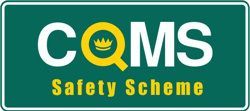We’re all well aware that demographics have shifted in recent decades and that we’re living longer. We’re also remaining active longer – at work, socially and physically - and that means that there are a growing number of drivers aged over 70 on the roads, travelling to various activities.
Is this affecting road safety? And what action can be taken to ensure road safety with an aging population?
What do the stats tell us?
- Over 4 million drivers aged over 70 in the UK.
- 191 drivers aged over 100.
- Oldest UK licence holder is a woman aged 107.
Evidence suggests that whilst the rate of casualties tends to drop as motorists get older and become more experienced, at the age of 70 that rate starts to increase again.
In accidents involving people aged over 69, the person aged over 69 is more likely to be the cause of the collision than a younger person involved. For collisions involving an 80-89 year old, the older person is four times more likely to be the cause of the collision.
Why might unsafe driving increase with age?
While statistical information can be conflicting as to how age affects driving, it’s important to look at factors that may impact on road safety for older drivers, including:
- Poor eyesight
- Difficulty identifying hazards
- Knowing the correct course of action to avoid a collision and taking that action
- Slowing reflexes
- Catastrophic age related illness at the wheel, such as heart attacks and strokes
Research by the RAC Foundation suggests that while older drivers are as safe as any other when driving in towns, countryside and while overtaking, there are certain key locations where difficulties can arise. These locations require drivers to look around quickly and make fast decisions. They include:
- High-speed junctions
- High-speed roundabouts
- Slip roads onto motorways and dual carriageways
Increasing safety through motor technology
One method of improving safety for older drivers is through in-vehicle technology. Active safety systems are becoming firmly established, with technological innovation continually adding to the efficiency of current systems and creating new ones. In-vehicle safety technology includes:
- Braking assist
- ABS
- In vehicle driver monitoring (vehicle monitors the driver's state and performance for dangerous behaviour and practices)
- Lane Keeping and Adaptive Steering (to keep a vehicle in the correct lane position on the road)
- Electronic Stability Control
- Heads up display
- Energy-Absorbing Steering System
- Electrochromatic Mirror/Auto Dimming Mirrors (reduces glare from headlights reflecting back from the mirror)
While vehicle technology has a big part to play in safety, according to ROSPA (Royal Society for the Prevention of Accidents), caution should be exercised in relying on active safety systems to reduce accidents. There are several possible pitfalls to over-reliance on technology, including insufficient driver participation, leading to lack of awareness of potential hazards.
As research and development of fully autonomous cars continues, it is possible that in the future cars will be made safe to a level that eliminates the need for driver participation altogether, whatever the driver’s age. But there is always the possibility of technical error.
Increasing safety through highway engineering
There are a number of ways that older drivers (and others) can be assisted through enhancements to roads, signage and signalling. These include:
- Strong contrasts to edge detail (kerbing, tactile paving etc.)
- Removal of polished road surface that causes glare in bright sunlight
- Well defined and maintained signs
- Ensuring forward and junction visibility is unobstructed by shadows or poor lighting
- Reflective paint on kerbs at traffic calming areas
- Appropriate entry angle at roundabouts and T junctions (older people with limited neck movements, may not be able to see around door pillar)
- Entry slip roads should not be located on a left hand bend
- Sufficient length of merge / acceleration lanes
- Dedicated right turn phase at signal junctions
- Sufficient visibility of circulatory carriageway at roundabouts
Planning for the future
The RAC Foundation points to the importance of older people continuing to drive, as a lack of mobility can lead to problems and difficulties including isolation, depression and difficulty in accessing goods and services.
As yet, there are no formal proposals from central government regarding road safety and the aging population. At the same time, it’s clear that there are a wide variety of methods available to increase road safety for everyone, while also counteracting the possible increased risks posed by an increasing number of drivers aged 70 or over.
While we can expect to see the continuing introduction of active safety system in cars, alongside local authority initiatives to reduce accidents, it would be useful if the government could work alongside transport professionals to create a framework of safety guidance, together with resources that could ultimately save money and save lives.






